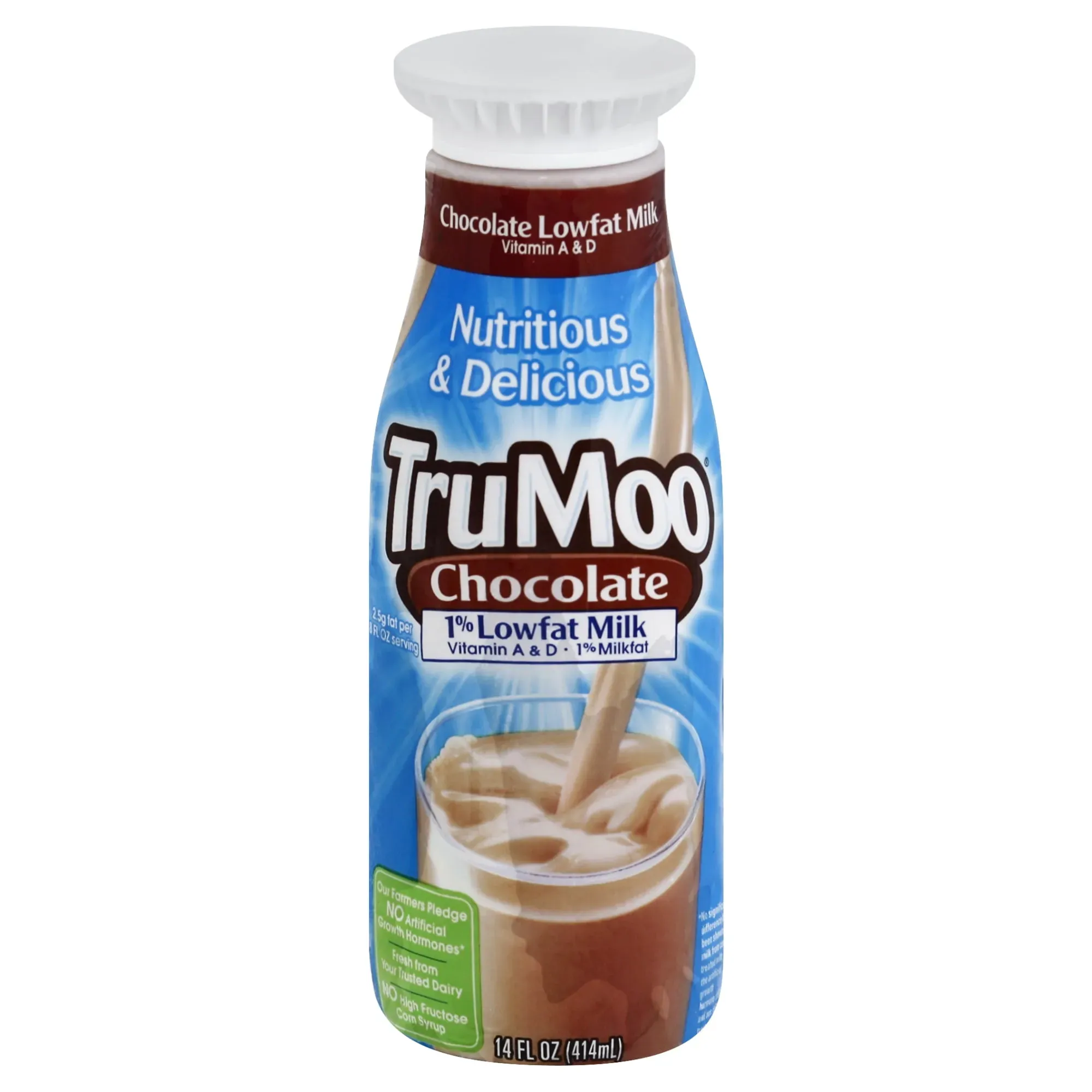Table of Contents
Who doesn't love chocolate milk? That rich, sweet comfort drink often brings back childhood memories. But as adults, we start looking at labels, especially when it comes to fat and sugar. This is where low fat milk chocolate enters the picture, promising that classic taste with a lighter profile. It sounds like a win-win, right? A way to enjoy a beloved treat without the perceived guilt. But what exactly makes it "low fat"? Does cutting the fat mean adding something else? And does it still deliver on that satisfying chocolate flavor we crave? Navigating the dairy aisle can feel like a test, with claims and percentages vying for your attention. We're here to cut through the noise and look closely at what low fat milk chocolate actually offers. Forget the marketing hype for a moment. Let's get down to the facts about its contents, its nutritional impact, and whether it truly fits into a balanced diet or is just clever packaging. Get ready to understand this popular drink beyond the simple claim of being "low fat."
Decoding Low Fat Milk Chocolate: What's Really Inside?

Decoding Low Fat Milk Chocolate: What's Really Inside?
Starting with the Base: What "Low Fat" Means Here
Alright, let's pull back the curtain on low fat milk chocolate. First off, the "low fat" part isn't rocket science. It means exactly what it says: the milk used has a significantly lower fat content than whole milk. Whole milk typically hovers around 3.25% fat. Reduced-fat milk (2%) cuts that down. Low-fat milk (1%) slashes it even further. Skim milk gets rid of almost all of it. So, when you see low fat milk chocolate, you're starting with milk where a good chunk of the naturally occurring fat has been removed. This process changes the texture and mouthfeel quite a bit compared to full-fat versions. The richness you get from milk fat isn't there.
Adding the "Chocolate" and Other Bits
Now, about the chocolate part. This usually comes from cocoa powder. It's not typically melted chocolate bars, which contain cocoa butter (fat). Cocoa powder is mostly the solids left after the fat is pressed out. But cocoa powder alone can taste a bit bitter or flat in milk. So, manufacturers add sugar. Often, a lot of sugar. They also use thickeners like carrageenan or corn starch to give it back some of the body and smooth texture lost by removing the fat. Natural and artificial flavors might show up too, boosting that chocolatey taste. Sometimes, they add salt to round out the flavor profile. It's a mix of dairy, cocoa, sweeteners, and texturizers designed to mimic the feel and taste of a higher-fat product.
So, what are you commonly finding in that carton of low fat milk chocolate?
- Lowfat milk (typically 1% or 2%)
- Sugar (often liquid sugar or sucrose)
- Cocoa (processed with alkali or not)
- Corn starch or Carrageenan (for texture)
- Natural Flavor
- Salt
- Vitamins A & D (often added back)
Low Fat Milk Chocolate: The Nutrition Facts You Need to Know

Low Fat Milk Chocolate: The Nutrition Facts You Need to Know
Calories and Fat: The Headline Numbers
you've swapped out the full-fat stuff for low fat milk chocolate. The immediate assumption is fewer calories and less fat, right? Generally, yes. A standard cup (about 240mL) of 1% low fat chocolate milk usually clocks in around 150 calories. Compare that to whole chocolate milk, which can be closer to 200-220 calories. The fat content drops significantly, from maybe 8-10 grams in whole milk down to about 2.5 grams in 1% low fat versions. That's the "low fat" promise delivered. But here's the catch: removing fat often means adding something else to make it palatable and give it body. And that something is typically sugar.
Sugar and Protein: The Balancing Act
This is where things get interesting, or perhaps a bit less rosy. While the fat goes down, the sugar often goes up compared to plain low-fat milk. A single cup of low fat milk chocolate can pack around 22 grams of total sugars. A significant chunk of that, maybe 10-12 grams, is added sugar. That's about 2.5 to 3 teaspoons worth of sugar dumped into your drink. For context, the American Heart Association suggests limiting added sugars to about 25 grams per day for women and 36 grams for men. So, one cup uses up a good portion of that daily allowance. On the upside, you still get the protein from the milk, usually around 8 grams per serving, which is decent for muscle repair and feeling full.
Nutrient (per 1 cup) | Typical Low Fat Milk Chocolate | Plain 1% Low Fat Milk |
|---|---|---|
Calories | ~150 | ~100-110 |
Total Fat | ~2.5g | ~2.5g |
Total Sugars | ~22g | ~12g (naturally occurring) |
Added Sugars | ~10-12g | 0g |
Protein | ~8g | ~8g |
Vitamins, Minerals, and Other Guests
Beyond the macros (fat, carbs, protein), low fat milk chocolate still provides valuable micronutrients, largely thanks to the milk base. You'll typically get a good hit of calcium, essential for bone health, often around 300mg per cup. Many brands also fortify their milk with Vitamin D, crucial for calcium absorption, providing around 2.5mcg (100 IU). Vitamin A is another common addition. So, you're not just drinking sugar water; there's nutritional value. However, you are also getting those thickeners we mentioned earlier, like carrageenan, which some people prefer to avoid, and potentially artificial flavors or colors depending on the brand. It's a trade-off: reduced fat and some added goodness, but also a significant dose of added sugar and other ingredients.
Choosing Your Low Fat Milk Chocolate: Tips and Tricks

Choosing Your Low Fat Milk Chocolate: Tips and Tricks
Become a Label Detective for Low Fat Milk Chocolate
so you're standing in the dairy aisle, faced with a wall of options claiming to be low fat milk chocolate. How do you pick? The first step, and honestly, the most important one, is flipping that carton over and reading the nutrition label and ingredient list. Don't just grab the one with the prettiest packaging or the biggest "low fat" claim. Look at the added sugars. Seriously, compare different brands. You'll be surprised at the variation. Some manage to keep added sugars lower than others. Also, check the ingredients list. See what thickeners or flavors they're using. If you're trying to avoid carrageenan, for example, this is where you find out. It’s like being a detective, but the mystery is hidden sugar and fillers, and the prize is making a slightly better choice for your body.
Not All "Low Fat" is Created Equal
Just because it says "low fat" doesn't mean it's automatically the best choice for your goals. Remember that 1% versus 2% milk base distinction we talked about? That impacts the final fat content, albeit slightly. More significantly, the *amount* and *type* of sweetener used can differ wildly between brands. Some might use high fructose corn syrup, others cane sugar, and some might even include artificial sweeteners (though this is less common in standard low fat milk chocolate). Taste preferences play a role, of course, but if you're primarily focused on reducing added sugar intake, a quick comparison of labels is non-negotiable. I once grabbed a carton assuming they were all roughly the same, only to find one had significantly more added sugar than the brand I usually bought. Felt a bit foolish, honestly.
Check the Label For: | Why It Matters: |
|---|---|
Added Sugars (grams) | Indicates how much sugar is put in beyond milk's natural sugars. Lower is generally better. |
Ingredients List Order | Ingredients are listed by weight. If sugar is the second ingredient after milk, that's a red flag. |
Thickeners/Stabilizers | Ingredients like carrageenan or corn starch affect texture and can be personal preference. |
Considering Alternatives and Moderation
Look, nobody is saying low fat milk chocolate is evil. It's a treat, and sometimes you just want that chocolatey goodness. But if you're drinking it daily or in large quantities, those added sugars add up. Consider it an occasional indulgence rather than a dietary staple. If you're looking for a more frequent option, maybe try making your own at home with plain low-fat milk and a small amount of unsweetened cocoa powder and a touch of your preferred sweetener (like a tiny bit of honey or stevia). This gives you control over the sugar content. Or, honestly, sometimes just a small piece of dark chocolate and a glass of plain low-fat milk hits the spot and avoids the added sugar issue entirely. It's about being mindful of what you're consuming, even when it seems like a healthier version of a classic.
Is Low Fat Milk Chocolate Right for You? Weighing the Pros and Cons

Is Low Fat Milk Chocolate Right for You? Weighing the Pros and Cons
The Upside: Less Fat, Still Nutrients
So, you're eyeing that carton of low fat milk chocolate, wondering if it's a reasonable choice. The biggest pro is right there in the name: less fat than the whole milk version. If you're actively trying to reduce saturated fat intake, this is a straightforward way to do it while still getting some dairy goodness. You still benefit from the milk's natural protein and calcium, and many brands add back vitamins A and D, which are important for bone health and overall well-being. For someone who genuinely enjoys chocolate milk and wants a slightly less indulgent option compared to a full-fat shake or other sugary drinks, low fat milk chocolate can fit the bill as an occasional treat. It's certainly a step down in fat from, say, a large fast-food milkshake.
The Downside: Sugar, Sugar, and More Sugar
Here's where the shine fades a bit. While the fat is lower, the added sugar content in low fat milk chocolate is the elephant in the room. As we saw, it often contains a significant amount of added sweetener to compensate for the lost richness. This can contribute to your daily added sugar intake quite rapidly, which isn't ideal for managing weight, blood sugar levels, or overall metabolic health. Drinking a lot of added sugar, even in a drink with some protein and calcium, can lead to energy crashes and doesn't provide the same feeling of fullness as whole foods. It’s easy to gulp down a large serving and consume a surprising amount of sugar without feeling particularly satisfied afterwards.
Pros of Low Fat Milk Chocolate | Cons of Low Fat Milk Chocolate |
|---|---|
Lower in total and saturated fat than whole chocolate milk | Often high in added sugars |
Good source of protein and calcium | Added sugars contribute to empty calories |
Fortified with Vitamins A and D | May contain thickeners and artificial flavors |
Satisfies a chocolate craving | Less filling than whole milk due to lower fat |
Making Your Decision: Moderation and Context Matter
Ultimately, whether low fat milk chocolate is "right" for you depends entirely on your overall diet, activity level, and health goals. If you're an active teenager who needs extra calories and nutrients, a serving might be perfectly fine. If you're an adult trying to manage blood sugar or reduce added sugar intake, it should be an infrequent treat, if at all. Think of it as a dessert in a glass rather than a health drink. Can it be part of a balanced diet? Yes, in moderation. Is it the *most* nutritious way to get calcium and protein? Probably not, given the added sugar load. Consider making your own with plain milk and cocoa, or simply enjoying plain milk and a small piece of dark chocolate separately. It's about being realistic: low fat milk chocolate is a sweet treat, not a health elixir.
Making Your Decision on Low Fat Chocolate Milk
So, we've taken a look under the hood of low fat milk chocolate. It’s clear that while it reduces fat compared to whole milk versions, it often compensates with added sugars. The nutrition panel tells the real story – calories, protein, vitamins, and yes, those sugars. Choosing one involves checking ingredients and understanding how it fits into your overall eating pattern. It’s not a health elixir, but it’s also not inherently bad. Like most things, moderation is key, and being informed about what you're drinking allows you to make a choice that aligns with your dietary goals, whether that's enjoying a nostalgic treat or managing specific nutrient intake. It's simply chocolate milk with less fat; the rest is up to you and your grocery list.
